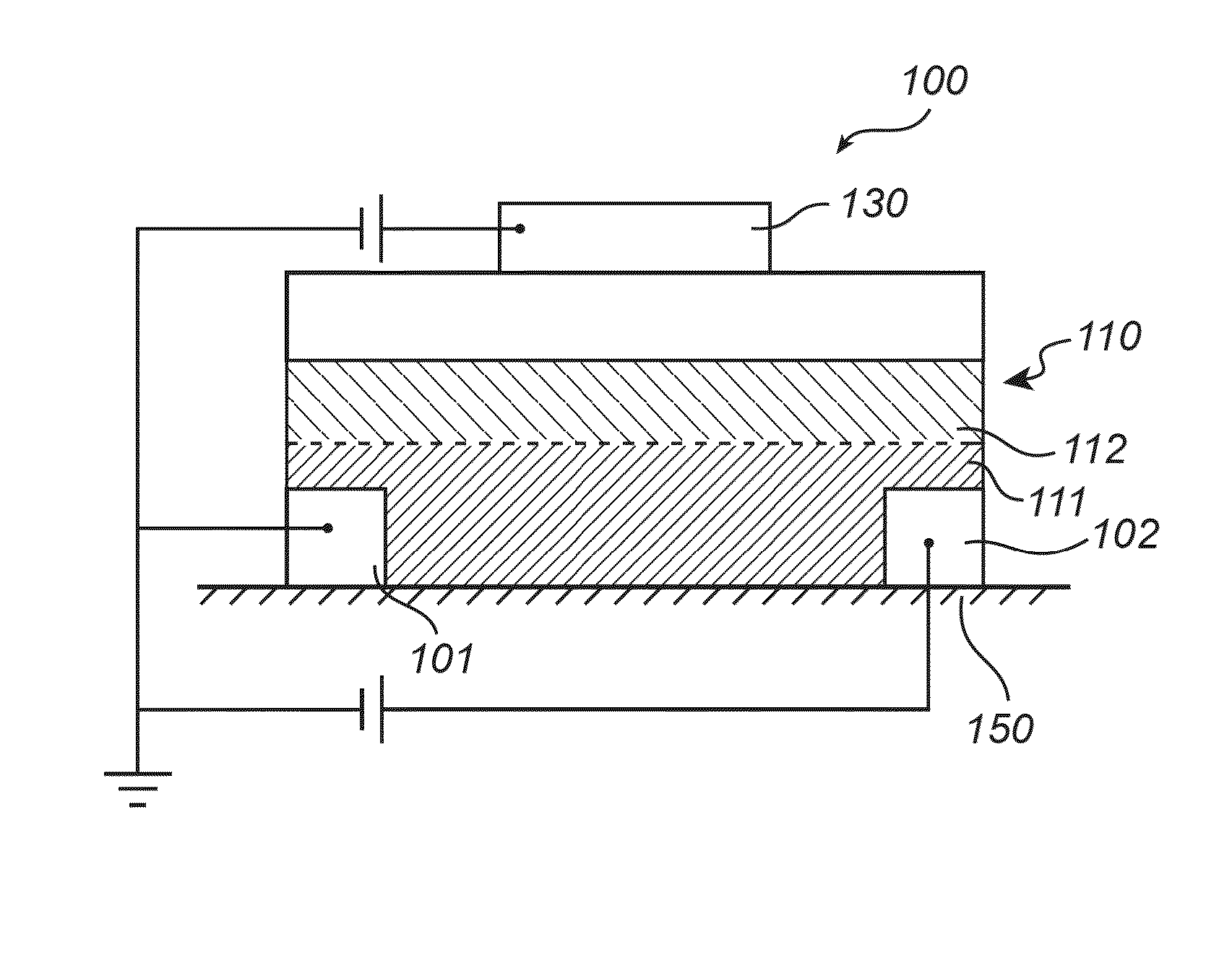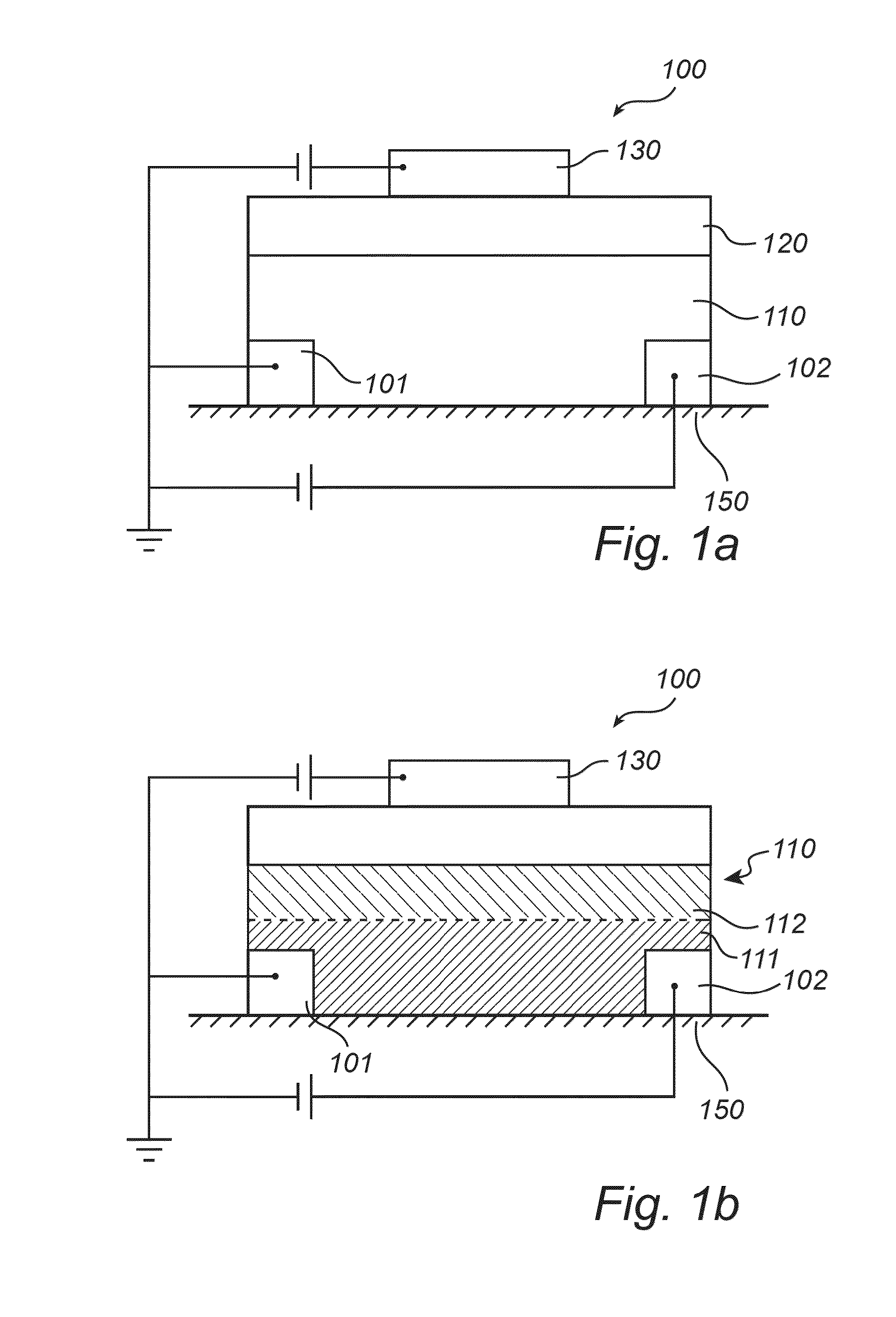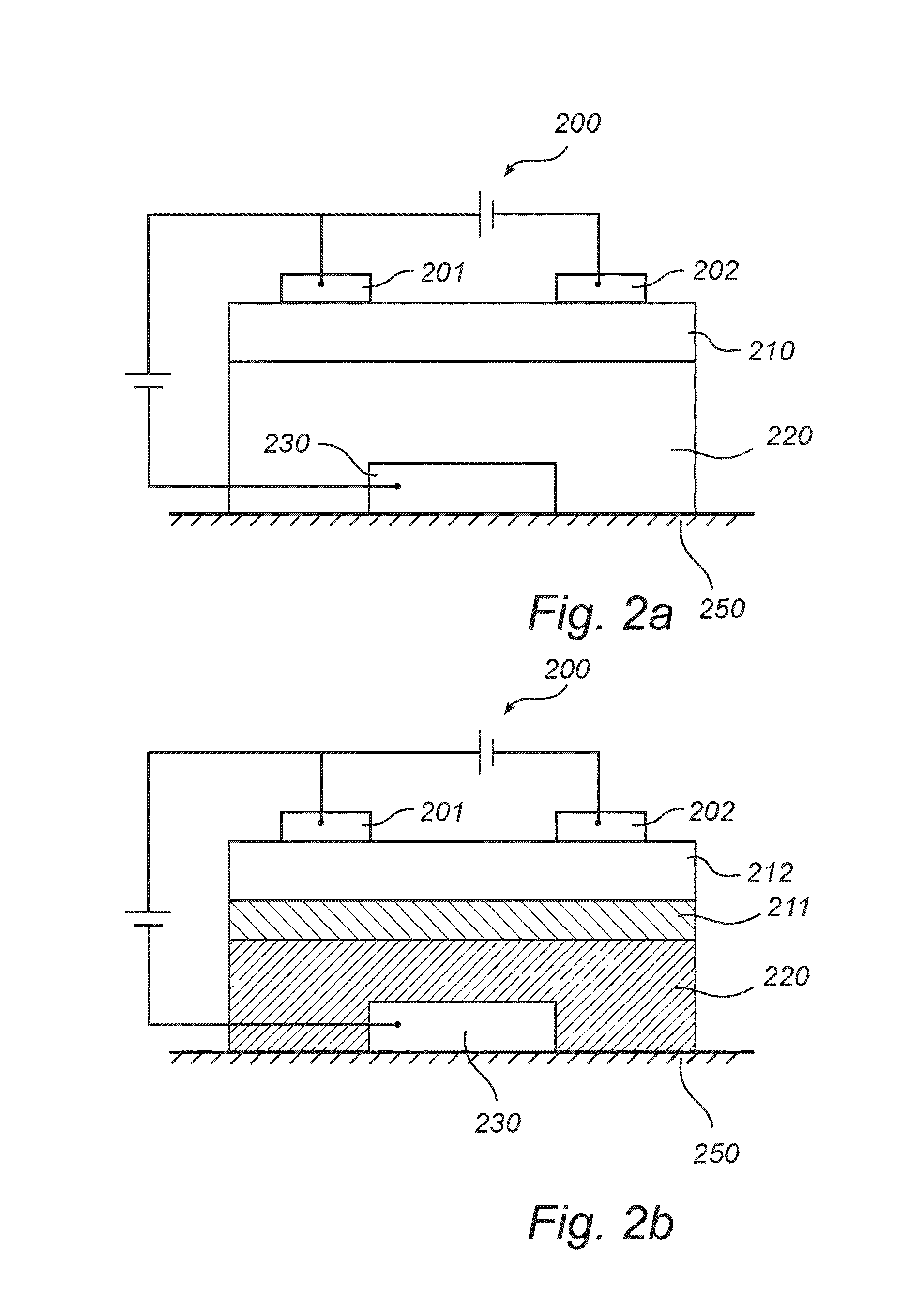Organic field-effect transistor device
a transistor and organic technology, applied in the direction of thermoelectric device junction materials, semiconductor devices, electrical apparatus, etc., can solve the problems of difficult processing, low efficiency, and low efficiency of transistors, so as to avoid mechanical problems which may appear with gel-like electrolytes, no hysteresis
- Summary
- Abstract
- Description
- Claims
- Application Information
AI Technical Summary
Benefits of technology
Problems solved by technology
Method used
Image
Examples
example 1
Synthesis of the Semiconducting Polymeric Material, the Amphiphilic Copolymer P3HT-b-P(MMA-r-HEMA:SBA)
[0106]Poly(3-hexylthiophene)-b / ock-poly(methyl methacrylate-random-hydroxyethyl methacrylate) P3HT-b-P(MMA-r-HEMA) copolymer was synthesized by atom transfer radical copolymerization of methyl methacrylate and hydroxymethyl methacrylate from a P3HT-macroinitiator (Mn 1H-NMR=7200 g / mol, M=1.38) followed by an esterification of hydroxyl dangling groups with sulfobenzoic acid cyclic anhydride (SBA) to finally give P3HT-b-P(MMA-r-HEMA:SBA), (Mn 1H-NMR=10500 g / mol, M=1.39).
[0107]The synthesis is further described in Examples 1A-1H
The Materials Used:
[0108]3-Hexyl thiophene, N-bromosuccinimide, iodine and iodobenzene diacetate were purchased from Acros and used as received. Ni(dppp)Cl2, i-PrMgCl in tetrahydrofuran (THF) (2 mol / l) were also purchased from Acros and stored in glove box at room temperature. 2-Bromoisobutyryl bromide (Br-iBuBr), triethylamine (NEt3, 99%), n,n,n′,n′,n-pentameth...
example 1a
Synthesis of 2-bromo-3-hexylthiophene
[0109]In a 200 ml flask, a solution of N-bromosuccinimide (5.29 g, 29.7 mmol) was slowly added to a solution of 3-hexylthiophene (5 g, 29.7 mmol) in 50 ml of anhydrous THF (50 ml) at 0° C. under nitrogen. The mixture was stirred at 0° C. for 1 h. After that, 50 ml of distilled water was added to the reaction mixture, and the medium was extracted with 150 ml of diethyl ether. The organic layer was washed with a solution of Na2S2O3 (10%), a solution of KOH (10%) and dried over anhydrous MgSO4. The organic layer was distilled to give colourless oil. (6.7 g, 92%). 1H NMR (300 Hz, CDCl3), δ (ppm): 7.19 (d, 1H), 6.82 (d, 1H), 2.59 (t, 2H), 1.59 (quint, 2H), 1.33 (m, 6H), 0.91 (t, 3H). 13C NMR (300 Hz, CDCl3), δ (ppm): 141.0, 128.2, 125.1, 108.8, 31.6, 29.7, 29.4, 28.0, 22.6, 14.1.
example 1b
Synthesis of 2-bromo-3-hexyl-5-iodothiophene
[0110]Iodine (1.42 g, 11.18 mmol) and iodobenzene diacetate (1.965 g, 6.1 mmol) were added to a solution of 2-bromo-3-hexylthiophene (2.5, 11.1 mmol) in dichloromethane (25 ml) at 0° C. The mixture was stirred at room temperature for 4 h. Then aqueous Na2S2O3 (10%) was added, and the mixture was extracted with diethyl ether and dried over anhydrous MgSO4. Then the solvent was evaporated to obtain crude products, which were purified by silica column chromatography (eluent:heptane) to give pure 2-bromo-3-hexyl-5-iodothiophene as a pale yellow oil. (3 g, 86%). 1H NMR (300 Hz, CDCl3), δ (ppm): 6.97 (s, 1H), 2.52 (t, 2H), 1.56 (quint, 2H), 1.32 (m, 6H), 0.89 (t, 3H). 13C NMR (300 Hz, CDCl3), δ (ppm): 144.3, 137.0, 111.7, 71.0, 31.5, 29.6, 29.2, 28.8, 22.5, 14.1.
PUM
 Login to View More
Login to View More Abstract
Description
Claims
Application Information
 Login to View More
Login to View More - R&D
- Intellectual Property
- Life Sciences
- Materials
- Tech Scout
- Unparalleled Data Quality
- Higher Quality Content
- 60% Fewer Hallucinations
Browse by: Latest US Patents, China's latest patents, Technical Efficacy Thesaurus, Application Domain, Technology Topic, Popular Technical Reports.
© 2025 PatSnap. All rights reserved.Legal|Privacy policy|Modern Slavery Act Transparency Statement|Sitemap|About US| Contact US: help@patsnap.com



